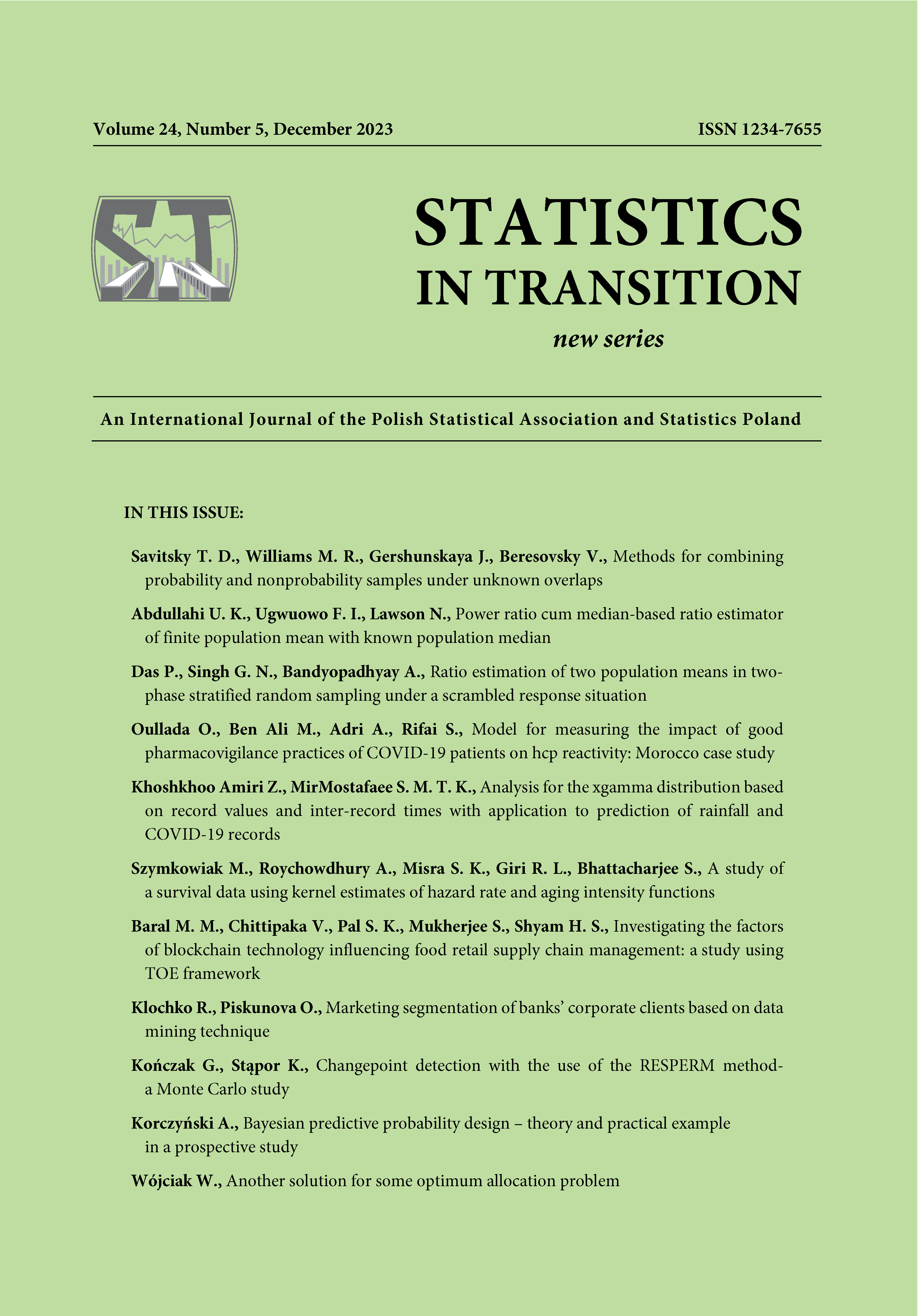ARTICLE
ABSTRACT
The search for an efficient estimator of the finite population mean has been a critical problem to the sample survey research community. This study is motivated by the fact that the conducted literature review showed that no research has developed such an average ratio estimator of the population mean that would utilize both the population and the sample medians of study variable, as well as the Srivastava (1967) estimator at a time. In this paper we proposed the power ratio cum median-based ratio estimator of the finite population mean, which is a function of two ratio estimators in the form of an average. The estimator assumes the population to be homogeneous and skewed. The properties (i.e. the Bias and the Mean Squared Error – MSE) of the proposed estimator were derived alongside its asymptotically optimum MSE. We demonstrated the efficiency of the proposed estimator jointly with its efficiency conditions by comparing it to selected estimators described in the literature. Empirically, a real-life dataset from the literature and a simulation study from two skewed distributions (Gamma and Weibull) were used to examine the efficiency gain. The empirical analysis and simulation study demonstrated that the efficiency gain is significant. Hence, the practical application of the proposed estimator is recommended, especially in socio-economic surveys.
KEYWORDS
finite population mean, bias, mean squared error, power estimator, medianbased, power ratio.
REFERENCES
Abdullahi, U. K., Ugwuowo, F. I., (2022). On efficient median-based linear regression estimator for population mean, Communications in Statistics – Theory and Methods, 51(15), pp. 5012–5024.
Cochran, W. G., (1947). Sampling Techniques, 3rd edition, New York: John Wiley and Sons. Gupta, S., Shabbir, J., (2008). On improvement in estimating the population mean in simple random sampling. Journal of Applied Statistics, 35(5), pp. 559–566.
Lamichhane, R., Singh, S. and Diawara, N., (2017). Improved estimation of population mean using known median of auxiliary variable. Communications in Statistics-Simulation and Computation, 46(4), pp. 2821–2828.
Hansen, M. H., Hurwitz, W. N. and Madow, W. G., (1953). Sample survey methods and theory. New York: John wiley.
Neyman, J., (1938). Contribution to the theory of sampling human populations. Journal of American Statistical Association, 33, pp. 101–116.
Olkin, I., (1958). Multivariate ratio estimation for finite populations. Biometrika, 45, pp. 154–165.
Singh, D., Chaudhary, F. S., (1986). Theory and Analysis of Sample Survey Designs, New Age International Publisher.
Singh, S., Horn S., (1998). An alternative estimator for multi-character surveys, Metrika, 48, pp. 99–107.
Srija, R., Subramani, J., (2018). Ratio cum median based modified ratio estimators with known first and third quartiles. International Journal of Communication and Media Sciences, 5(1), pp. 1–5.
Subramani, J., (2016). A New Median Based Ratio Estimator for Estimation of the Finite Population Mean. Statistics in Transition, 17 (4), pp. 591–604.
Srivstava, S. K., (1967). An estimator using auxiliary information in sample surveys. Calcutta Statistical Association Bulletin, 16, pp. 121–132.
